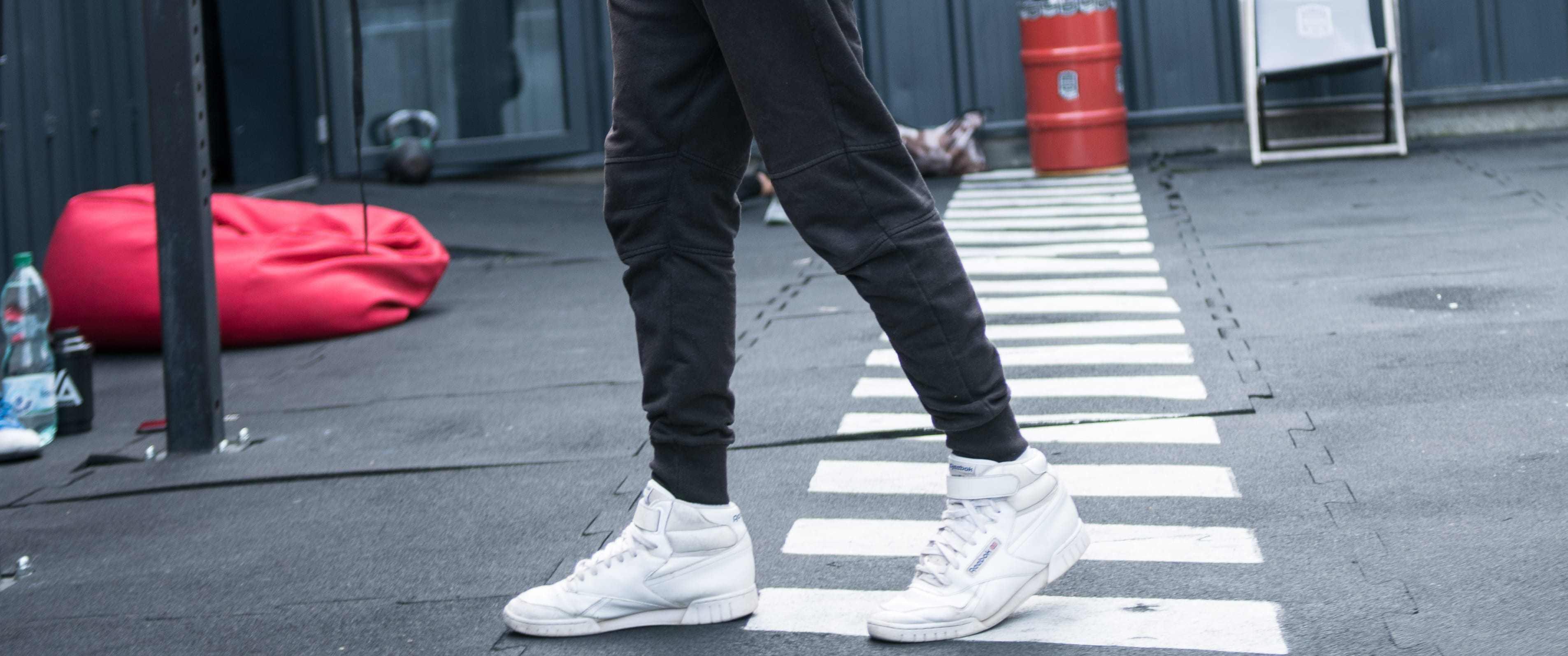
Knee pain when squatting
1. Squats in calisthenics
There’s a possibility that when you’re thinking about calisthenics workout, you picture mostly hand and arm-and core exercises. If that’s the case, I strongly suggest you add some squats to the mix. It is important to develop your body muscles holistically and not focus on a few body parts while neglecting the others. With squats, you can give your legs additional strength but also work on your range of motion, and balance. So… let’s start at the beginning!
2. Ideal squat – is it a myth?
So, how to squat? To put it bluntly: if you think that there’s only one way to do squats exercises, it means you still don’t know squat about squats! And if you’re pushing your body to do a squat “as it should be done”, silently cursing squats, yourself and all the world, here’s the good news: you may be wrong to try to do it “right”! Because there’s no one proper squat form for everybody – but there is a best squat form for you specifically. What does it all mean?
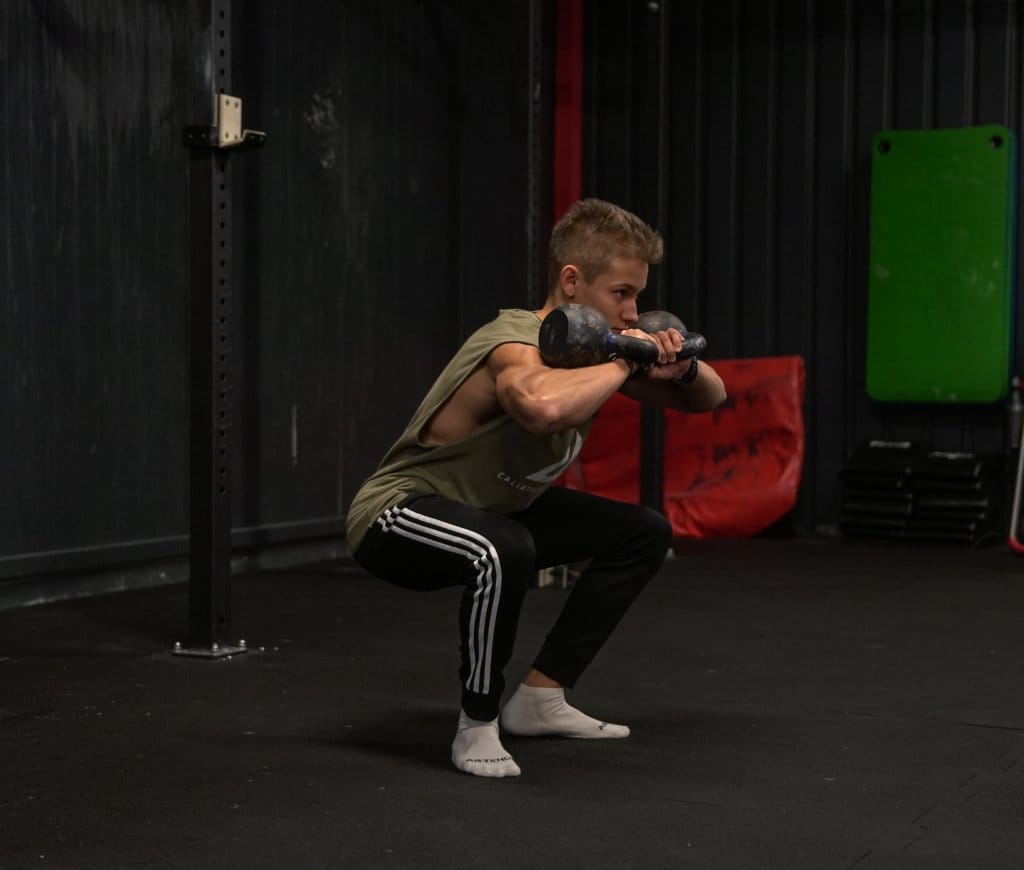
People are not built in the same way when it comes to the boney structure. There are differences in the way our femoral necks and heads or hip sockets are built, and those differences may cause someone’s narrower hip motion range or a bony block when trying to squat narrow. It means that sometimes to do a comfortable squat, you should set your legs wider or move your toes more outside. Moreover, you could have problems with doing the squat with your back straight. Some people won’t ever be able to do the „true” deep squat without leaning forward too much. That is why there are only general rules that apply to everybody:
- Your feet should have three points of support. It’s an important remark, because some people have problems with what is called overpronation of the foot. It’s a condition when your weight is not distributed evenly throughout the foot but rather on its inner parts.
- Open up your hips (but pay attention to your feet all the time, they should be as described in 1.) and focus on buttocks’ work. You can do band hip trusts to activate it and add glute bridges or lateral monster walk for the benefit of your gluteus medius.
- No “butt wink” – keep your back straight, especially in its lumbar section. Let it work isometrically.
When you’re still learning how to do a proper squat, you can exercise with a resistance band.
Wrap the band just under your knees. Stand with your feet shoulder-width apart. Adjust the band to be just under your knees. Turn your toes open slightly, and extend your arms in front of you. Do not perform the deep squat but instead and lower your hips down and back until the tops of your thighs are parallel with the ground. Press your knees outward while squatting. Keep your knees directly above your ankles. Press into your heels to stand back up.
You can also exercise with additional weight when expecting better results out of your workout. That way you’ll be able to control your progress better and work evenly on the lower and upper part of your body. You don’t have to use any special equipment – all you need is some heavy object you can hold near your chest.
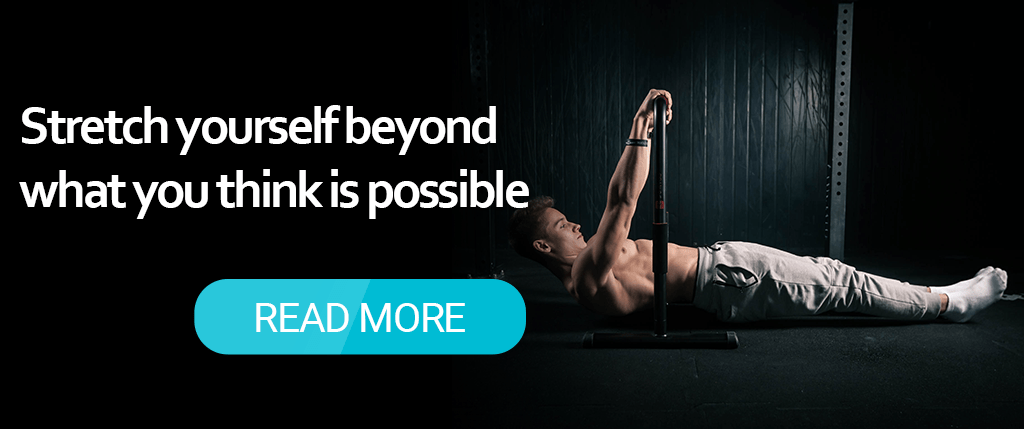
3. Where to start from with motion range and body position problems
When you start doing “your” squats, you will see what causes you problems (if anything). There are some exercises that can help you with doing the squats the best you can but it all depends on the problems you have. For example, if you feel you need it, you can practice your range of motion with
“crab swing” exercise. Sit on the floor with your feet at shoulder length apart and then lift your back and bottom to the air while keeping feet and hands on the floor. Start moving your butt back and forth between your feet and hands constantly increasing your motion range over time. Start moving your hands to the feet and when they will be close together focus on pushing your butt through the heels as much as possible. Then move the hands forward until you find yourself in a squat position. Walk yourself in and out of the squat. As for body position, try and pay attention to the feet position: shoulder width apart and in the beginning turned out slightly. Then work on gradually straightening the back and sitting back on your heels. Soon you’ll be able to get the proper squat form.
4. Problems ahead!
But wait – is there something like “comfortable” squat? Well, indeed, squats should be comfortable – after all, it once was (and in some cultures still is) a resting position. So when you experience knee pain when squatting, or some other ache for that matter, it means you’re not doing it right or – if you’re sure that you maintained the proper squat form – there might be a problem with imbalances or poor flexibility with muscles around the knees. So what should you do if your knee hurts when squatting? You shouldn’t quit your workouts, obviously, but don’t work through the pain but rather avoid the exercises that cause the discomfort. You should try using roller or Lacrosse Ball to massage the muscles and some strengthening exercises. But of you experience pain on a regular basis during your workout you should definitely contact a PT specialist. And if you don’t have problems with your knees, you still should do everything to avoid them by for example doing some stretches.
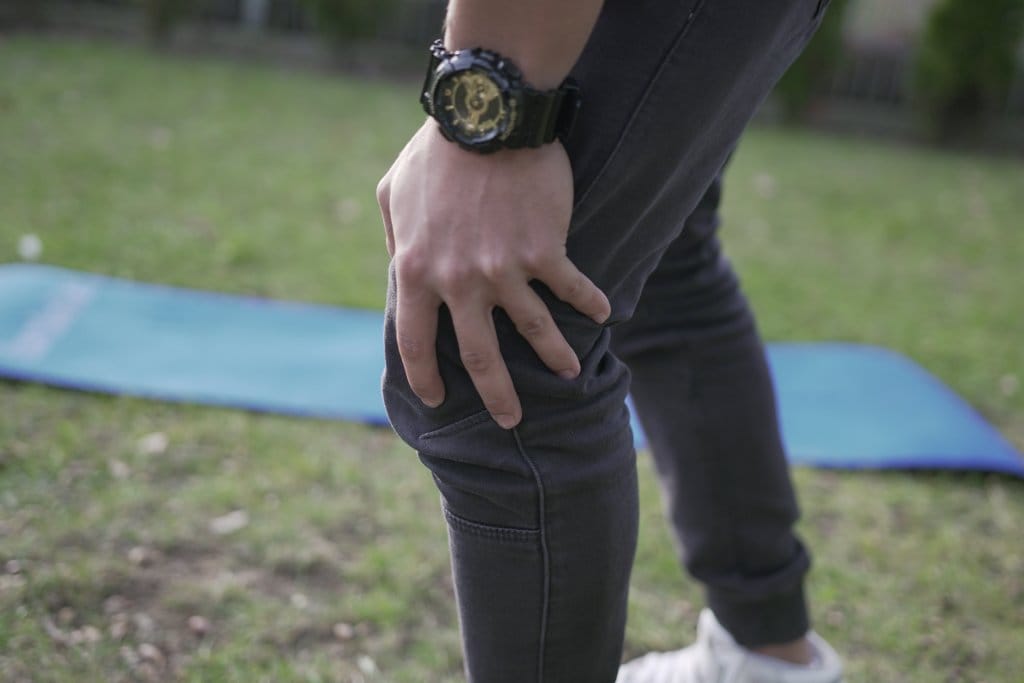
- Kneeling stretch
Kneel down on your left knee with your right foot on the floor. Then try and bend your right knee at a 90-degree angle. Put your right arm upward and stretch with your pelvis tucked slightly under. Then bend to your right – hold it for a moment, and sweep your right hand around towards your back leg, and reach your left arm forward into a torso twist. Move back to the starting position and then switch your legs and perform the exercise again, on the other sight. - Wall stretching
Place your one foot near a wall, and step the other one back so that your leg is straight and the heel is on the ground. Place your hands on the wall in front of your shoulders. Gently press into the heel, and lock your knee. Hold it for half a minute
5. Pain… and then some.
Unfortunately, it’s not only your knees that may cause you some problems when you’ll do the squats. You may also experience some pain in ankles, hips or back (squats sounds like more and more fun, don’t they?). In each case, there are some additional exercises you can perform to get rid of the pain and prevent future problems in those areas.
- Hips
While working on your hips do the exercises carefully: move in and out of the stretch several times, hold the position for 10-30 seconds and after that – shake it off. You can do many versions of hip stretches, for example, lay on your back with both knees bent, cross one leg over another and start pulling the crossed knee to the opposite shoulder. - Back stretches
You can stretch your back in many ways, for example, lay on your stomach and lift your upper body up on your forearms. Place your hands comfortably. Squeeze your shoulder blades together and scoop your chest toward the ceiling. Or you can do something like this:while you’re on the floor on your hands and knees lift your feet off of the ground and start swinging them to the right and left. Try keeping your back flat throughout the movement.Remember, when you experience back pain, especially in its lumber part, the most obvious reason of your discomfort is the wrong squat technique.
6. Rise to another level
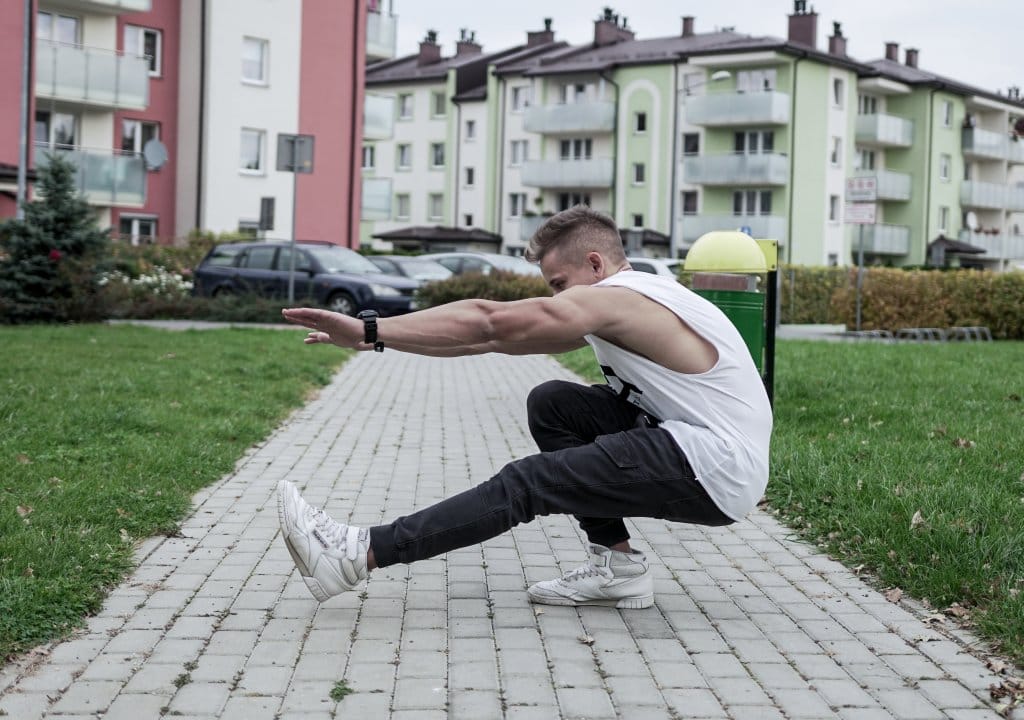
But there is also good news – the bodyweight squats can be so much more than just bending the legs. You can pick and choose from all these types of squat exercises:
- Pistol squat or the single-leg squat. The first step is to try it and see for yourself how hard it is to do. Extend one leg in front of you, then lower yourself while standing on the other one and stand back up. Did it? You can skip the paragraph and go to the next one. Definitely didn’t do it? Think hard about what happened when you tried it. Did you manage to lower yourself at all? What stopped you: did you lost your balance, or experienced lacking the needed range of motion in your hip/ knee/ upper back/ ankles? Or maybe your supporting leg was too weak? You need to find out the answers to those questions and address the issue: work on your flexibility or balance or strengthen the legs. When you did all that come back to the pistol squatting and try another approach: do a deep squat and roll on the ground (your butt needs to go up a bit while your back is on the floor) and then back to the deep squat. When you feel comfortable doing that, try rolling back to the deep squat but with one of your legs up. When you feel comfortable, try to stand up with the leg still extended in front of you. And then go for the lowering part.
- Sissy squat
While lowering yourself put your knees forward and heels up, so you support yourself only on the balls of your feet. With your torso in a diagonal line with your knees and shoulders, drop your knees down to the ground as you push back up. - Rolling squat
Described above as a way to achieve proper pistol squat form may be an excellent exercise by itself. - Jump squat
Set your legs little wider than usual. Instead of slowly coming back to a standing position jump into the air. Work with your arms as well – make them go up when you’re jumping up and cross them in front of your chest as you go down to the ground.
Of course, there are hundreds of squat variations and possibilities seem to be countless. Certainly, you can find some great exercises among them that will help you keep the boredom away from your routine.
And that’s it. One last piece of advice: try looking at the squatting like being in constant motion.

